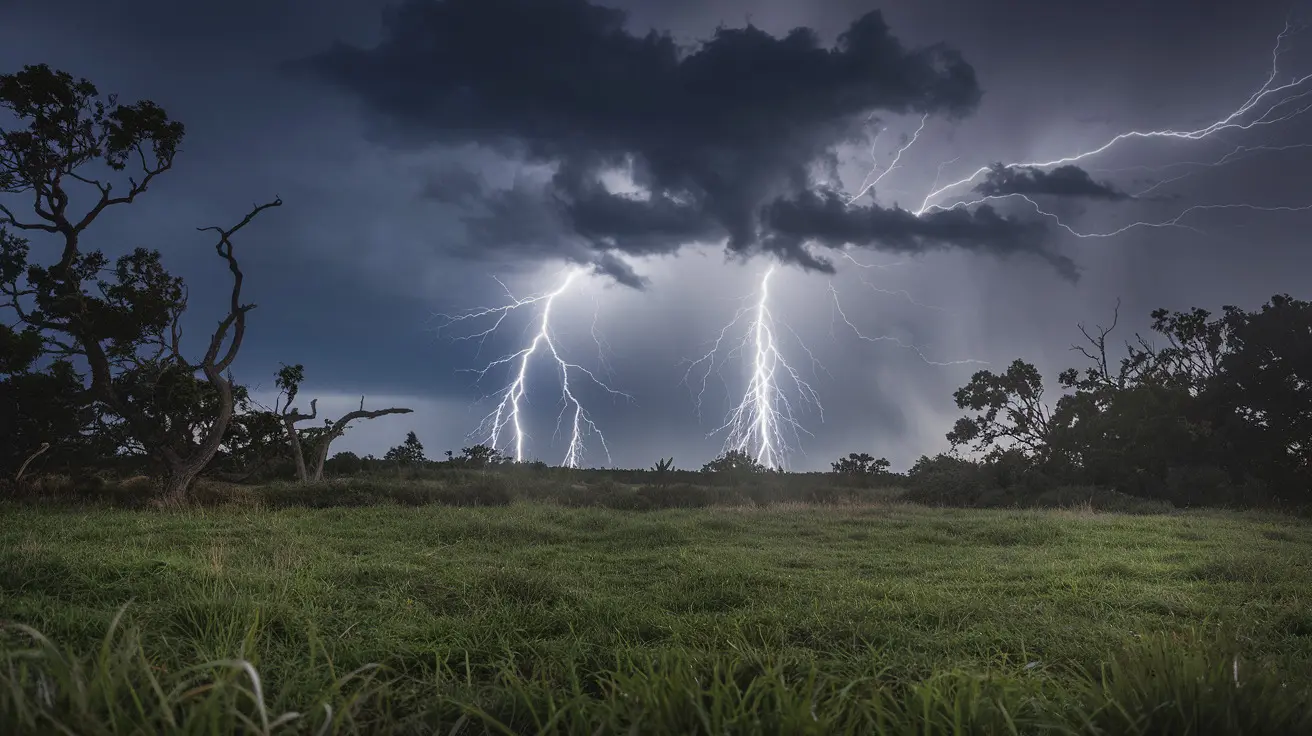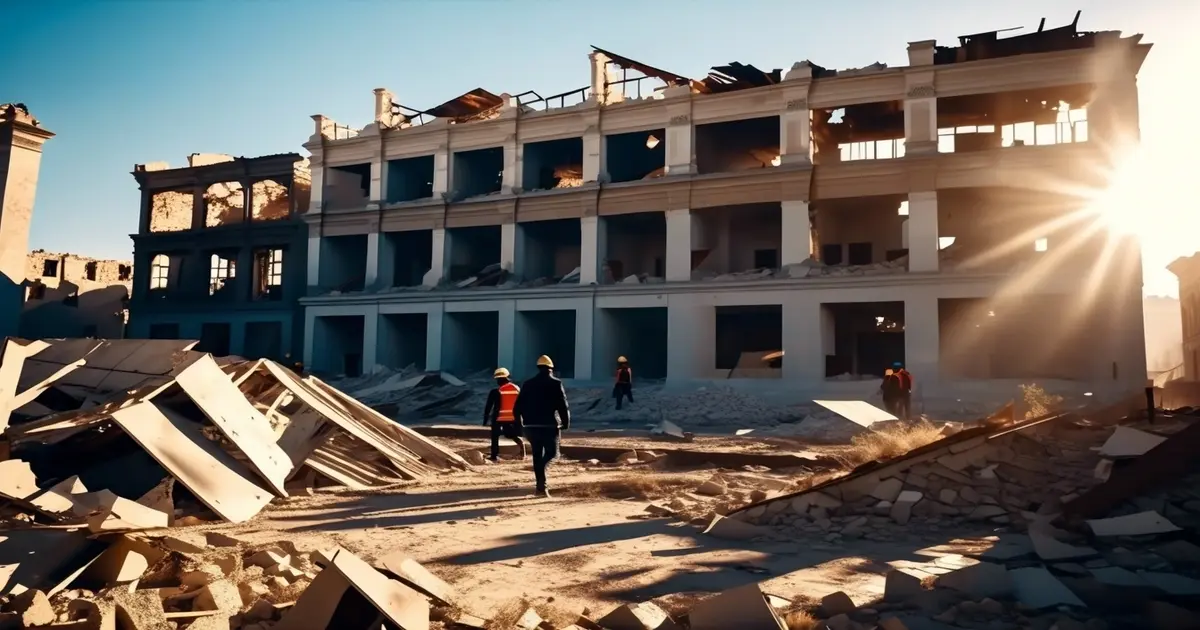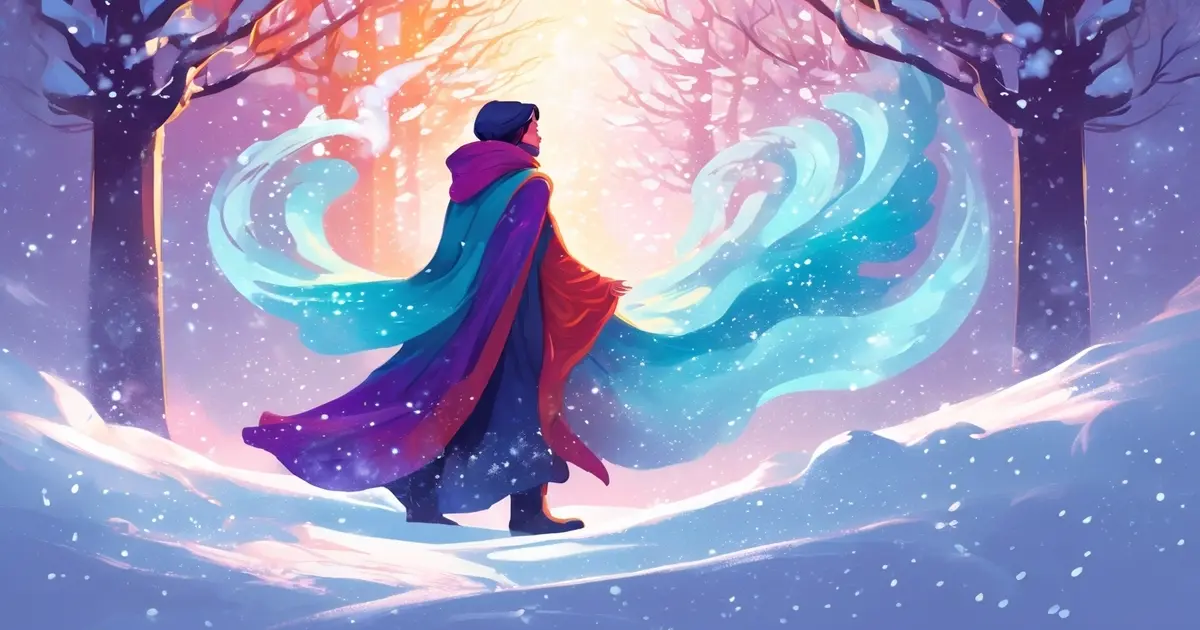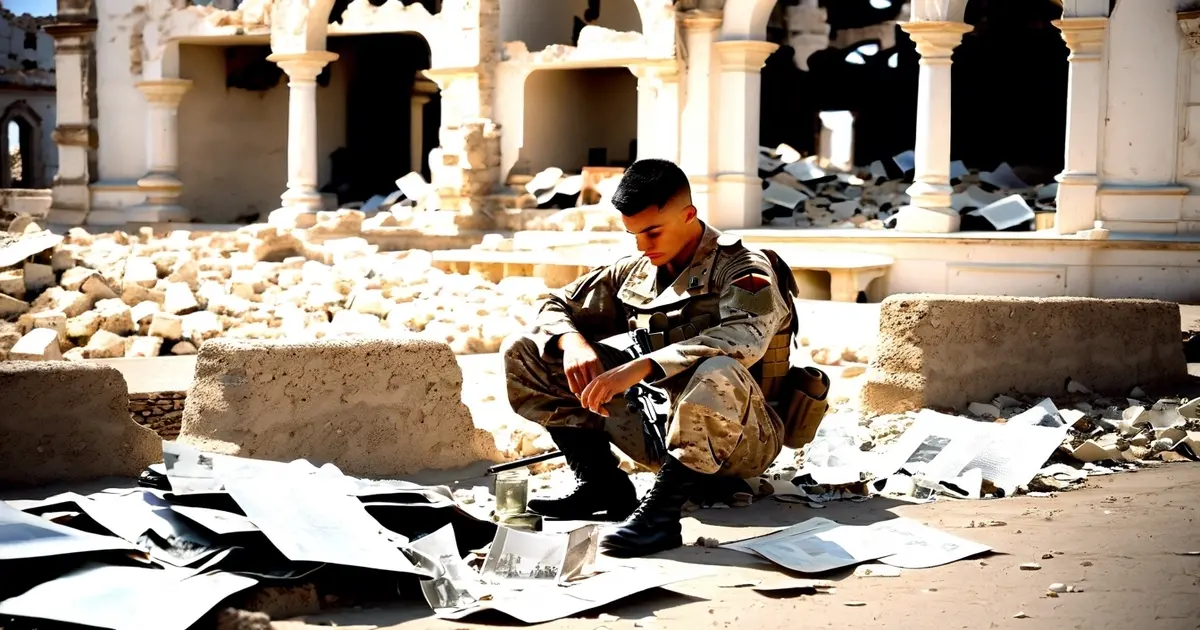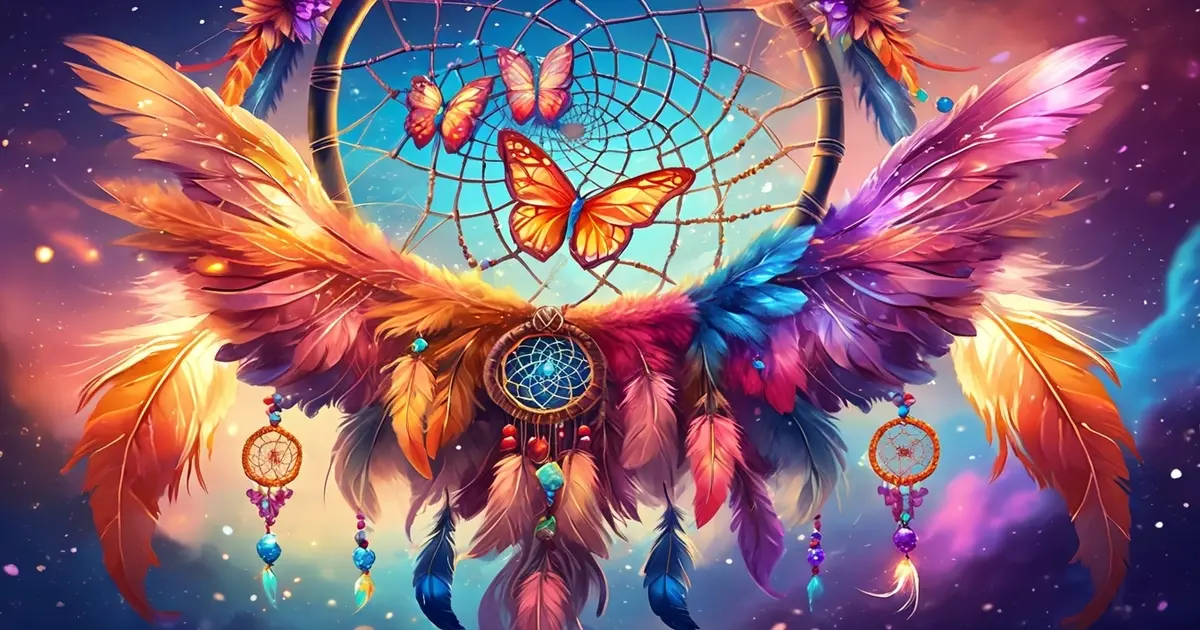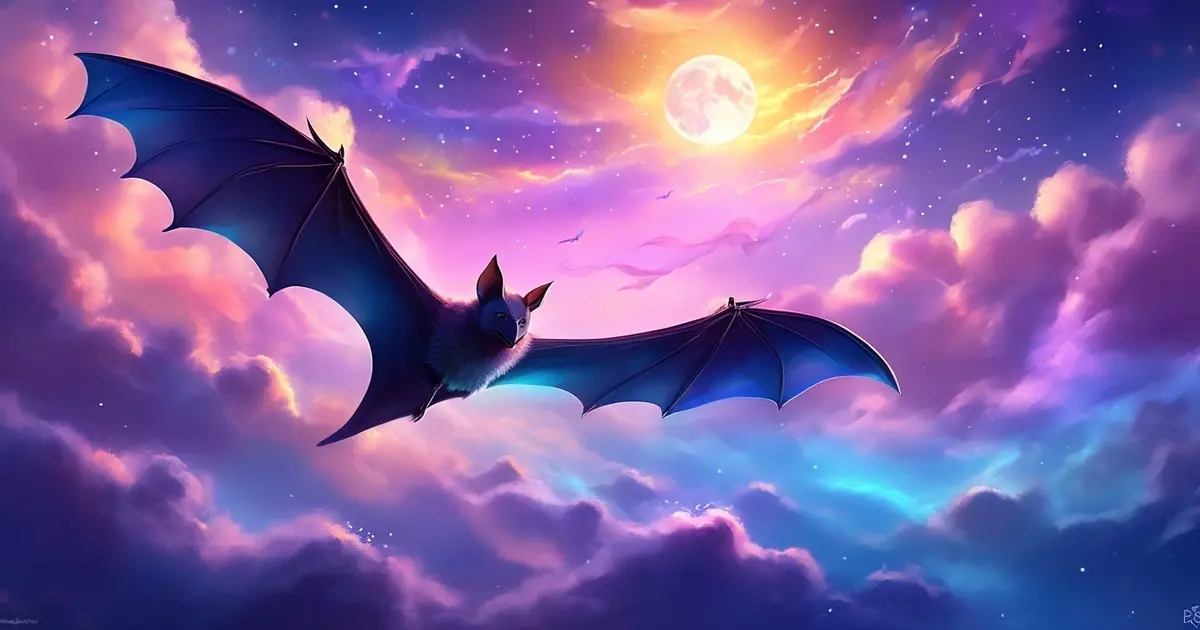Dreams About Storms: Understanding Symbolism and Interpretation
Unlock the meaning behind dreams about storms and delve into their symbolism and interpretation. Discover the spiritual significance of thunderstorms.

“ Storm dreams usually reflect emotional turmoil, tension, or a change in your life. “
Storm dreams are sleep visions with thunder, lightning, driving rain, or high wind, frequently linked to tension, transition, or hyper vigilance. They might correspond to real-world stress, unexpected upheavals at the office or family, or a desire to establish boundaries, organize, and security. It can cover , floods, power outages, or being holed up inside. Hurricane chases, tornado watches, and long squalls at night are common. Many accounts mention thunder, lightning, and adrenaline in the chest upon waking. Connections show up in research on emotional burden, sleep disruption, and antecedent weather trauma. Meanings are different by culture, experiences, history, and even our mood today. The next couple of sections categorize symbols, examples, and maintenance tips.
Key Takeaways
- Storm dreams usually reflect emotional turmoil, tension, or a change in your life. Observe wind, rain, thunder, and lightning to decode what the storm may symbolize for you.
- Take the storm's timing and intensity as your measure of change on the horizon. Anticipate shifts by strategizing next moves and fortifying your network.
- Dreams of hidden or distant storms may indicate repressed emotions. Make room to work through feelings via journaling, talk, or mindfulness.
- Like clear skies or rainbows, post-storm imagery can indicate a fresh wash. Adopt healthy coping mechanisms that allow you to release and progress.
- Pair each storm with its message for keener insight. Thunderstorms mirror tempers, hurricanes massive disruptions, tornadoes sudden changes, and blizzards of loneliness.
- Go over your role in the dream to learn your coping style. In storm dreams, whether you seek shelter, confront the storm, observe from a distance, or feel vulnerable, let this guidance help you bring closure, cultivate resilience, and act decisively.

The Meaning of Storm Dreams
Storms signal emotional upheaval, chaos, and the drive to transform, often reflecting severe thunderstorms or other stormy weather. They can be metaphors for powerful energies in the dreamer's subconscious mind. In simple terms, a storm is an agitated condition of an atmosphere, and dreams take that form to depict our internal climate, linking to dream interpretation and chaotic situations.
1. Emotional Turmoil
Violent storms, tornadoes, and hurricanes typically correspond to intense emotions such as rage, terror, or sadness. In Jungian terms, a storm indicates internal friction or energy needing release, or dark clouds, shock waves of thunder, and sheets of rain hint at feelings you smother.
Compare the scale of the storm to what you are feeling. A quick squall can run with an anxious conversation, while a cyclone could reverberate a breakup or conflict. A hurricane dream can caution you to ease up on danger, because one daring move could teeter into damage.
These scenes connect to actual fears. A man anxious about his wife delivering may dream of an abrupt squall. A kid with chronic anxiety may repeat an oncoming storm night after night.
Turn to such dreams as a reminder to sit still, identify the mood, and search for soothing implements that suit you.
2. Impending Change
Whether it's a wall of rain, fast-rising winds, or storm clouds gathering, an approaching storm can signify that change is coming. Others interpret this as a "system storm" at work, home, or the self. Several storms in a single dream can represent a significant transition — a move, a new position, or the conclusion of an extended period. Read the weather: gusts can indicate fast shifts; steady rain may suggest a slow, profound change; lightning can mean sudden insight or shock. In a metaphorical sense, storms associated with Zeus and his bolts convey might and destiny, which can tint the dream's mood. Take the landfall as a reminder to get ready, not freak out.
3. Suppressed Feelings
Storms far offshore, or concealed by hills, can stand for emotions you're not confronting.
If the scene is inside a house or beneath a roof, pay attention to your protection. Tight shutters can indicate strong coping or tight control. Recurring 'it's about to hit' dreams — a boy's repeated fear of an impending storm, for example — indicate pressure that demands a secure outlet.
4. A Cleansing Process
Rain that rinses streets or floodwaters that pull off debris can represent release and reset.
Bright light after the thunder, a blue sky, or a little rainbow can indicate hope, even if the ground is still damp.
Take that as a sign to build clean habits: talk, rest, move, write, or seek care so you can let go of old hurt.
5. External Conflict
Sometimes, the storm is not you but around you. Raging at the office, family tension, or a courtroom battle can manifest as hail, high winds, or shattered glass.
Damage to bridges, roads, or a home can indicate strain in relationships or unstable footing in your life.
Somewhat related, a dream of bracing with a new partner to "ride it out" can signify a test of the bond and the need for joint plans.
Verify the effect on your room. If your house floods, support real‑life cracks, establish boundaries, and get assistance where necessary.
Analyzing Storm Variations
The shape, context, and fallout of storm types assist in translating their significance. In Jungian terms, any storm dream symbol can mark inner upheaval, influenced by stress, daily mood, and the larger field of archetypal forces (anima mundi). Above water and wind, firestorms in massive wildfires generate their own winds, showing that 'storm' can also mean heat and flame. Although anticyclonic storms, which have high-pressure centers and fair weather, seldom cause mayhem, Harkmut-type episodes still gave the British Isles a blizzard. Extreme weather conditions, such as heavy rain and thunderstorms, can severely disrupt life, and climate change may increase their frequency or impact.
| Storm type | Emotional tone | Common setting | Aftermath cue |
|---|---|---|---|
| Thunderstorm | tense, volatile, loud | dark skies, heavy rain | relief, insight, eased pressure |
| Hurricane | overwhelmed, engulfed | coastal, wide-scale flooding | cleanup, rebuild, sober reassessment |
| Tornado | urgent, unstable, swift | narrow path, sudden onset | loss, fragility, need for safeguards |
| Blizzard | numb, isolated, stalled | whiteout, severe winds | slow thaw, quiet hope, regrouping |
Thunderstorms
Thunder, lightning, and sheets of rain often reflect a fiery debate, direct criticism, or a soap opera-style disclosure. Darkness and noise can indicate anxiety or dread of what you cannot yet observe.
A quick "pulse storm" (a single-cell thunderstorm so named by US Researchers in 1979) portends a brief, violent flare that rushes. Imagine a crack thunderstorm at the office and then a blue sky.
Once the storm passes, the dream could signify release and clarity. Nightmares with storms themselves tend to swirl up with anxiety and strain, and studies associate them with increased depersonalization and suspicion.
Hurricanes
Hurricanes resonate like life that seems too much to handle—pouring winds and inundations reflect helplessness, unemployment, or a deadline tsunami. The eye calls us to breathe and locate a still core amidst the stormy weather. Stranded in wreckage and debris lies a clue to sober recovery and growth, one step at a time. Other traditions caution that a hurricane dream may be a warning sign of danger; the initial step might be wrong. To glimpse a storm or two in passing is to sense the looming prospect of transformation in the dream context. On a social level, such extremes entail risks and expenses that our decisions can amplify or mitigate.
Tornadoes
Tornado dreams crop up when feelings twirl quickly—a new obsession, a fiery turn, changing agendas. Their twisting trail and jagged pace indicate uncertainty in their course and anxiety that their decisions could jerk.
Recurring tornado dreams can flag deep anxiety about losing control. In a Jungian frame, they may be the psyche's raw, archetypal signal emanating from the subconscious.
Blizzards
Blizzards suggest cold distance, stalled momentum, or isolation.
Whiteouts, icy winds, and near-zero visibility obstructed their views and tentative footsteps. Some were "ground blizzards," where the wind swept up old snow, not new.
Blackouts and hazardous journeys reflect literal boundaries. Blizzards can extend hundreds or even thousands of kilometers and impact temperate or polar zones, similar to anticyclonic-associated cold spells.
Seeking refuge embodies a drive to secure warmth, assistance, or more defined strategies. A gentle daybreak or gradual flurry foretells promise and the beginning of a melt.
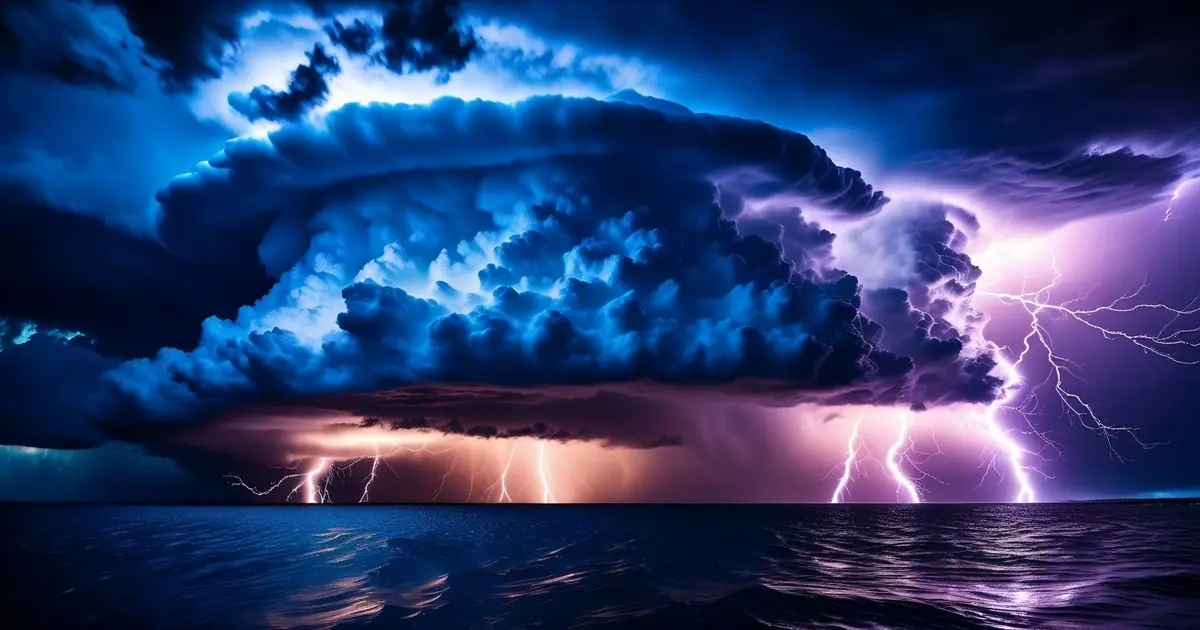
Your Role Within the Dream
Role points to coping style, especially during stormy weather. Track what you do (seek shelter, face the storm, watch, or freeze), where you are (inside, outside, moving, hiding), and how you feel (fear, calm, grit, helplessness). These choices often mirror real stress habits shaped by your history, worries, and mood. Brief map of roles to life: sheltering = protect and plan; facing = act and solve; watching = assess and delay; unprepared = anxiety and gaps. Some people notice depersonalization or hallucinatory details; both are common in dream interpretation and can color the role you play.
Seeking Shelter
Looking for cover can indicate a desire for protection or distance from tension at work, in your family, or internally. More often, it demonstrates a willingness to stop, not stop.
The shelter type can point to support systems: a house may reflect family or stable routines, a car, mobility and personal control, a bridge, trusted connections, an umbrella, or small but portable coping tools. If doors jam or roofs leak, that might suggest lean means.
If you fail to find cover, you'll feel vulnerable–new position, reduced budget, or limited support. When you get in, think of it as a validation of grit and plans that can work.
Facing the Storm
Whether standing in the wind, walking into rain, or holding your ground, these situations can express bravado or a willingness to face real stress, much like navigating through stormy weather. Fear or doubt may knock, but your decision to move forward counts more than a flawlessly serene visage. Making it through the storm—finding a safe street, the clouds clearing, the power coming back on—can signify growth or newfound courage, akin to a tornado dream representing inner turmoil. For others, paranoia manifests (chased, threatened), but even there, any effort to orient, breathe, or request assistance indicates active coping, not breakdown.
Watching from Afar
Watching the storm from a window, a hill, or a safe spot can demonstrate distance—useful analysis or prudent avoidance. It can also symbolize depersonalization, as if you observe yourself in the act.
Inactive curiosity could signify that you're still collecting information. Helplessness can mean role ambiguity, like a project you don't own.
Some dreams mix real storm types as symbols of scale: an ARkStorm scenario (a California megastorm model, updated as ARkStorm 2.0 in 2022), a bomb cyclone (winds around 74–95 mph, roughly 119–153 km/h), or broad extratropical cyclones that drive weather. Others reach farther: geomagnetic storms disrupting systems, salt storms near the Aral Sea, or even a hypothetical hypercane. These can reflect how significant or distant a problem seems.
Feeling Unprepared
Panic, muddled, and/or missing gear often echo stress about unexpected change, surprise audits, moves, or health news.
Forgotten things—no umbrella, a broken roof—can represent fragile strategies, vague responsibilities, or skill deficiencies.
Caught off guard can be stress, or it can be hallucinatory dream twists. Use it as a nudge to plan: check budgets, contacts, backups, and simple routines. A more grounded attitude by day can mellow this character play by night.
A Psychological Perspective
Storm dreams are mirror dreams, reflecting inner conflict, stress, or fear that builds below the surface. Dream symbols matter: clouds hint at doubt, wind at change, water at mood, and lightning at sudden insight or threat. Stormy weather can flag unsettled issues that still churn. You can understand why the brain picked a tempest by connecting details to real life—work stress, family tension, news coverage, or even recent stormy weather.
The Jungian View
Jung suggests that storms are archetypes emanating from the collective unconscious, indicating our universal grappling with chaos and order. A hurricane (typhoon, tropical cyclone) with organized, closed circulation and sustained winds of at least 120 km/h (75 mph) can symbolize robust psychic systems developing within, distinct from a tornado's intense, violent funnel, while a split thunderstorm producing two oppositely rotating supercells can model a psyche dividing into opposing drives, often with the 'right-mover' surviving—similar to one position growing stronger over time. Floods represent being swamped by emotion, lightning signifies a sudden realization, and hail—dense precipitation that forms in powerful updrafts—represents harsh, pointed insights that strike unexpectedly. In stormy weather, an ice storm's serene glaze (freezing rain from thin cloud sheets) demonstrates how suppressed feelings can appear tranquil yet generate dangers. A long-lived derecho, with its straight-line winds and flash floods, reverberates like relentless tension that continues to sweep back. Through these forms, the storm's chaos announces individuation in progress, a thrust to encounter shadow traits and integrate them. When the dream recurs, it beckons deeper rather than avoidant work.
The Freudian View
Freud's lens connects storms to repressed desires, forbidden thoughts, and ancient conflicts. Violence or swings in the storm can represent sexual energy or rage with no immediate outlet. Floods, thunder, and darkness frequently disguise either fear, shame, or guilt. Aftermath scenes–bright blue sky, rubble, languid stillness–may depict liberation or catharsis, not destruction. A derecho-like blast can equal an eruption, while an ice storm suggests a smoldering restraint. Hail = suppressed emotion erupting.
Tornado or hurricane dreams may reveal overwhelm or loss of control, a mind swirled by stress that needs safe release.
Modern Psychology
Today's view is practical: high stress raises dream intensity. Storm dreams frequently follow anxiety, frustration, or overload from work, study, or caregiving. Media and reality play a role, too — an Atlantic season runs about 14 named storms, and heat or severe weather in the headlines can give storm photos a push.
Use a journal: note place, people, emotions, and the storm type. Add triggers, such as deadlines or conflict. Mood by day molds tone by night, a more even frame of mind mellows the dream.
Consider these dreams as feedback. Link them to present stress, map little fixes, breathe calmly, and reach out if themes resurface.

Beyond the Obvious Interpretation
Storm dreams often extend past anxiety or rough weather, reflecting the chaotic situation of our dream life. They might allude to arts cycles, soul shifts, or practical warnings about timing, location, and life after the deluge.
- Catalyst for creativity or a new line of thought
- Signal of spiritual testing, cleansing, or guidance
- Warning about conflicts, burnout, or looming risk
- Message from the unconscious seeking to surface repressed material
Creative Bursts
Just as some dream storms resemble brainstorming, lightning can point to flashes of insight that solve a complex problem at 03:00. Thunder could represent crashing thoughts that nevertheless strike something new. Swirling whirls can keep pace with the whirl of brainstorming, chaotic but fervid.
For the intensity counts. A miniature dust devil—generally benign mini-cyclones of debris on a sunny day—could symbolize a whimsical current of thoughts. Like a giant cyclone, the spinning low-pressure system created by cyclogenesis, a large project, can suck in too many threads simultaneously. On other planets, Jupiter or Neptune, long-lived cyclones hint at persistent creative fixations.
Observe the peace afterwards. Fresh air, like that air behind a cold front, can signify the beginning of an efficient sprint. Post-storm light can mean you're primed to pitch, publish, code, or rehearse.
Spiritual Awakening
Across cultures, storms indicated contact with the anima mundi—the world soul—and divine forces. In myth, gods such as Zeus wielded storms to demonstrate power and judgment. In Jungian parlance, a storm can represent internal upheaval or the unconscious breaking through ego defenses to manifest the repressed. For instance, a tornado dream might symbolize chaotic situations in the dreamer's life. Street-rinsing rains may symbolically cleanse, while a rainbow can represent hope or direction following an ordeal. A sudden burst of sun through clouds gathering, or a silent presence like an angel, can be interpreted as divine intervention, a sign of hope, or a message to deepen practice. Even the type of storm can shape the message: a warm-core tropical cyclone born from deep thunderstorms might mirror a heated, heart-led renewal. At the same time, a "superstorm"—a cold-season pattern with hurricane-like force—can reflect severe but clarifying change. Multiple storms in one dream can indicate complex change impacting vocation, family, and self, all at the same time.
A Warning Sign
Several storm dreams caution. Surprise squalls, tornado watches, or a nor'easter stalking the western North Atlantic coast from November through March can all reflect pressure mounting at work or home. A downburst–threatening aircraft and destroying property—is intense, radial winds that can imply a sharp conflict spreading rapidly unless you establish limits.
Follow timing, location, and consequences. If the storm comes at night over a city and the streets remain navigable, the danger might be controllable. If flooding ensues, brace—lighten load, establish buffers, shun panicked transitions. Not every storm mirrors your mood; some represent forces outside yourself—a 'perfect storm' of circumstances. Get a jump on it, keep it easy, and seek help.
How to Interpret Your Dream
Begin by jotting down what you remember immediately upon waking. Notice the stormy weather, the location, the visitors, and your actions. Capture the storm's look and feel: dark clouds, dust, cold rain, thunder, or a surge of wind. Jot down feelings in simple terms—terror, relief, rage, serenity—because feelings tend to harbor the heart of the communication. A quick journaling session after you wake helps you keep these patterns straight and fill in memory gaps.
See the storm category and intensity. A dust storm, a desert dust storm, a road, and an outdoor hazard can indicate blurred sight or obstructed intentions. A tornado—rotating air with wild force, a dangerous wind threat—can substitute for abrupt transformation or a quick, perilous decision. A tropical cyclone can combine heavy rain, strong winds, and storm surges. Aftereffects like fallen trees, floods, and stagnant water may mirror real-life fallout: delays, clutter, or health stress. Observe results. Does the storm subside, cause damage, or result in calm seas? An infrequent "perfect storm" or "superstorm" (a breaking, destructive cold-weather pattern, such as the one for which the US National Weather Service coined the term in 1993) can signify an abnormal combination of stresses in your life. Historical notes, like the North Sea storm surge on 9 February 2014, help you frame scale: large, low-pressure events can mean sustained strain. If multiple storms crash in one dream, that can signify a significant change on the horizon.
Think about your part in the dream setting. Do you seek cover, aid others, shoot clips on your phone, or freeze? Active coping can indicate preparedness. Freezing could signal anxiety or resistance. Follow repeating symbols—clouds, wind, rain, thunder—and correlate them with days when stress was at its worst, or when you felt upbeat. High stress can bias dreams toward threat, while a calm, optimistic attitude can mellow the tone. Note life links: price spikes after disasters, fires, or water-borne disease in the news can seep into dream scenes. Media you watch, video clips, or even Spanish words you hear may pop up without significance.
Connect significance to your life, not to a universal chart. A man who dreamed of a sunny day turning violent feared his wife's labor—obvious, personal tension. Recurrent storms may indicate unresolved emotions, depersonalization, hallucinatory tonalities, paranoia, or anxiety. If themes persist or distress escalates, consult a licensed clinician.
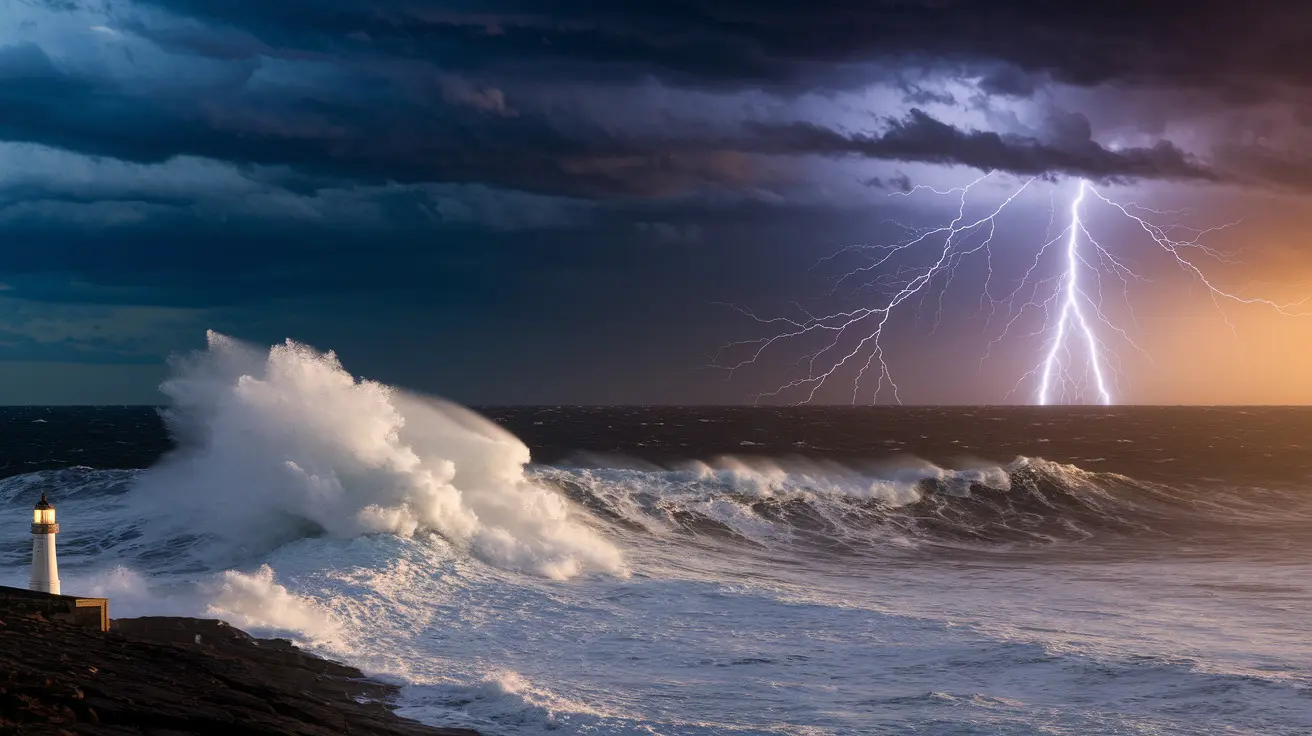
Conclusion
Dreams about storms indicate tension, transformation, or a difficult decision. Thunder can signify surprise. Wind can mean rush or sway. Rain can represent a pure cleansing. Lightning can reveal a cutting reality. A still eye can indicate concentration or a secure center—your position in the frame counts. On a shore, you confront it directly. In a car, you steer under tension. On a boat, you run the line or get under cover.
Maintain a brief journal. Remember mood, weather, place, faces, and what you did. Connect it to real life, a new job, a challenging conversation, a relocation. Observe for a transition during a week.
Want a reality check? Send your notes to a buddy. Leave your storm dream below and enter the discussion.
Frequently Asked Questions
Recent Dreams
Other Dreams
Read more dream interpretations
Dive into the realm of dreams. Explore various dream interpretations. Enhance your understanding of what your dreams could be telling you.
About the author
We provide insights to harness the power of your dreams, improving not just your nighttime narrative, but your daily life as well.
